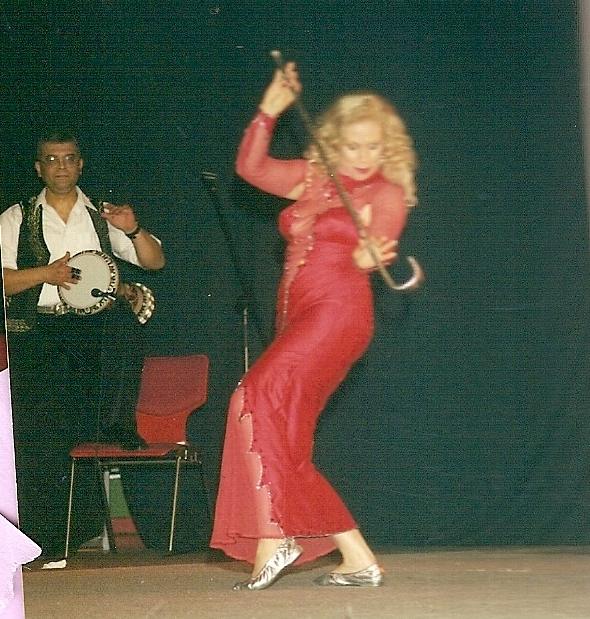|
Cane Choreography

Sakti w/Sayed Balaha, Hanover Germany
The Saiidi
Cane Dance originated as a peasant dance. Supposedly, the field workers,
while on break, would pluck a reed from the banks of the Nile and begin
dancing with it. Another thought is that the cane dance is a women's
dance, and originated by watching the men dance. The men would use
sticks to fight in wars. The women would do victory dances with the men,
and copy the men when the men went off to war by using canes.
Tahtib is the men's stick dance that evolved out of a display of
skill in combat with a bamboo staff. Strongly rooted in the lifestyle of
the fellaheen (rural or village people) the tahtib is
recognized in the Arab world as Egyptian in origin, very similar to the
martial art of Akido.
Theatricalized presentations involve a mock battle as the protagonists
dance, saiidi style, holding the stick in one or both hands
swinging it around above their heads striking it on the ground or
against each other's staff in choreographed movements.
The dance I perform is the female version of the tahtib, which
comes from the Arabic word for stick or staff, even though the dance is
usually done with the cane instead of the staff. Raks Assaya, the
female version, is coy and flirtatious. The movements have been softened
and stylized while still retaining an air of exhibitionism. According to
researchers Raks Assaya is the epitome of female charm and one of
the most popular dances in Middle Eastern entertainment. It is a common
occurrence at weddings, circumcisions, births, and in the floor shows of
Oriental dancers.
HOME | BIOGRAPHY |
PHOTOS | ARTICLES &
REVIEWS
INSTRUCTION |
EVENT CALENDAR | STORE |
CONNECT

|